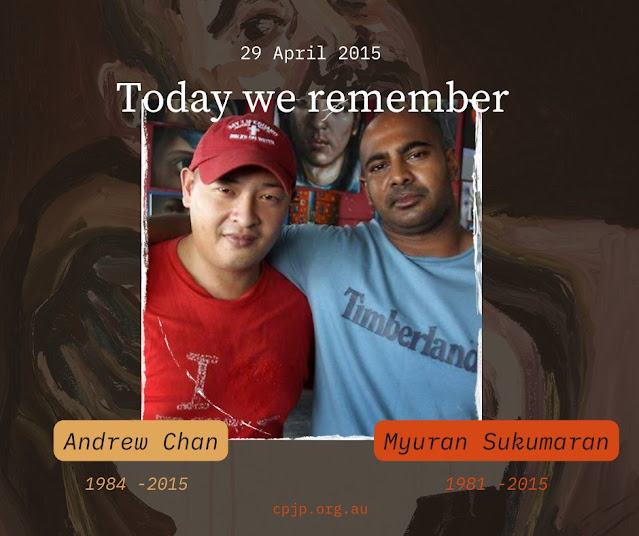I hope that President-elect Joe Biden quickly commutes all federal death sentences to life in prison. I hope that he directs every United States Attorney he appoints to seek life sentences rather than executions in future cases.
He can do this without Congressional agreement.
But if Biden announces these steps as isolated moves in a stand-alone speech, we’ll be in for a round of “soft-on-crime,” ghost-of-Willie-Horton, rhetoric in response.
So, I hope that when Biden issues these commutations, he frames them in the context of a straightforward declaration that the era of treating criminal justice challenges with futile anti-crime gestures is over.
Biden should say that a new era has dawned—that from now on we will maintain a dedicated focus on what actually works to build safe and flourishing communities.
Go big. Then live up to it. Make the pardon power a normal part of our toolkit.
The Federal Death Penalty as Gesture
Prodigious amounts of statistical expertise are expended trying to prove (or refute) the hypothesis that the death penalty deters murder. Nothing persuasive has been generated, and so I’m stuck with my own first-hand knowledge.
During the last 45 years I’ve represented many people charged with murder Some of them were guilty. Although we spent lots of time together working on their cases, I have no privileged insight into their inner lives. I did get to know many of them pretty well—but only well enough to understand that there was more to know.
Still, I do feel certain about one thing: they would not have been deterred by the thought that they risked the death penalty rather than life in prison. That calculus couldn’t and didn’t play any role in the horrific trains of choices that led them to inflict violent deaths.
And I’ve also had plenty of time to confront the reality that the tests we employ in criminal trials often fail. A National Academy of Science
study estimated that the rate of wrongful convictions in death-penalty cases is at least 4.1 percent.
Besides, our adversary processes—even when they work as designed—are structurally incapable of providing an accurate portrait of the person on trial.
At a capital trial the prosecutor’s representation of the defendant clashes with the defense lawyer’s representation, and the jury is forced to choose between the two, or to construct a representation of its own. It is only at the moment of execution that no representation
suffices, and the actual human is substituted, strapped to the gurney, and killed. The man executed is always a stranger to the jurors who condemned him.
The federal death penalty is not preventative. We use it to shout as loudly as we can that there are crimes and criminals that we detest.
For many people, advocating for the death penalty provides a way to demonstrate that they value murder victims and hope to give some solace to their families. For political candidates, an execution isn’t really expected to accomplish anything beyond communicating their own attitudes. Their support of a lethal injection serves a branding function.
But homicides still happen, and, by now the federal death penalty is deployed as a
fallible,
expensive, and ultimately impotent shriek of rage. No one thinks that killing the approximately 50 inmates currently on the federal death row is going to change that.
For at least the past 50 years we’ve been content to ratchet up the volume, and the federal death penalty embodies that pervasive pattern.
Whatever else they do, mandatory minimum sentences, aggressive programs of stop and frisk, and persistent efforts to bolster the “finality” of sentences by insulating them against legal challenges, all allow political figures (and voters) to declare which side they are on in the battle to control crime.
Apparently, to say something about this battle must almost let you feel as if you are doing something about it, so long as you say it loudly enough.
Wielding Tools, Not Gestures
Biden will be in a position to commute death sentences and redirect future prosecutions without Congressional approval, not as a bow to an isolated liberal piety, but because doing so can mark a decisive turn to a new, serious approach to preventing crime without inflicting disastrous harm on communities.
There is an opportunity here, although I’m sure that to some it looks more like a minefield.
The contribution to mass incarceration made by the
1994 Violent Crime Control and Law Enforcement Act, with which Joe Biden is identified, is often overstated; but Biden is no stranger to the tradition of mobilizing draconian measures as a means of political expression.
Biden has spent some time as an apostle of “tough on crime” solutions, and the fact that Biden sang with that chorus for years could make him a persuasive messenger.
By now Biden, like many others, has learned some lessons. He should say so, and he can say so in a way that turns us from “tough” to smart—from talking to doing.
Law, criminology, public health are all represented on the panel.
The Review marshals research support seven steps that reduce violence but do not require law enforcement action. We can improve a community’s physical environment: build well-lit, pedestrian-suitable spaces.
Research indicates that we can nourish anti-violence norms and peer relationships. We can redouble our emphasis on engaging and supporting youth. We can confront our gun problem and treat substance abuse as a public health problem. We can intervene to mitigate the acute financial stress that motivates crimes.
And we can move immediately to reduce the harmful iatrogenic effects inflicted by our justice processes—do what we can to operate with consistency, transparency, and accountability.
What could emerge these efforts is the sense that we are determined to admit our mistakes and dedicated to
learning from them.
The Ecology of Reform
Criminal justice in the United States is a state and local responsibility: the federal government investigates and prosecutes only a tiny sliver of offenses, and it rarely plays a direct role in local crime prevention.
That does not mean a new administration has no influence; its potential indirect power to change the landscape by fostering research and supporting research-derived programs is enormous.
But the layer of academics, policy gurus and philanthropies through which that power must be transmitted is not transparent. The world of grant-giving, grant-seeking, and grant-evaluating has rules of its own.
An administration aiming for change has to put itself in a position to harness those elements to foster a culture of continuous improvement.
One important contribution of the John Jay Research Advisory Group’s Review is its realistic analysis of a prevailing Ecology of Reform that threatens to channel a new administration’s efforts to move things forward.
For example, academic research’s tendency to fetishize randomized controlled trials at the expense of other lenses will teach us some important things, but will obscure others. A desire for ready program evaluation exerts a gravitational pull that draws funders toward short-term projects, when long-term programs may well be more valuable.
Using the data that we have can lead us to overlook the fact that there is other data that we need.
The conventional language of the academic journals is specialized and obscure and studies are usually quarantined behind paywalls—the research is rendered inaccessible to the practitioners who might make use of the findings.
A new federal administration, because it controls a critical mass of research, technical assistance, and program evaluation resources, can shape can shape all of these features.
The New Day
Given the current membership of the Supreme Court, it is unlikely that the Eighth Amendment and Fourteenth Amendments will be invoked to ban all executions nationally. The controversy will survive in state legislatures. If a permanent federal execution ban is sought, Congress gets involved.
In those fora, politicians will howl “Soft on crime!”
Let them. The moral squalor of the closing days of the Trump/Barr Administration, when frenzied efforts to execute prisoners (ProPublica’s
account makes harrowing reading) coincided with granting pardons to cronies, provides the incoming president with every justification for doing what he can to rationalize this field.
Biden can do more than commute one sentence at a time and then hunker down to endure Republicans’ pornographic accounts of the murder that was committed by each spared prisoner.
He can use his power to commute to turn a page. He can announce that from now on we are willing to learn that the sentences we imposed were mistakes. He can make sentence reviews, clemency, and pardons
a regular, routine part of our practice—sources of system resilience, not signs of weakness.
He can put in place a just and efficient federal pardon process that includes community perspectives and that frees the reviews of sentences from the roiling cross-currents of plea-bargaining leverage, hopes of motivating cooperating witnesses, prosecutorial and judicial ego, systemic racial biases, and media hysteria that warped the original determinations and impositions of the sentences.
He can take the first step on the long road to making everyone’s safety the goal of the criminal process—to making criminal justice a matter of nurturing Us/Here, not controlling Them/There.
Source: thecrimereport.org, Opinion, James M. Doyle, December 28, 2020. James M. Doyle is a Boston defense lawyer and author, and a regular columnist for The Crime Report.
🚩 | Report an error, an omission, a typo; suggest a story or a new angle to an existing story; submit a piece, a comment; recommend a resource; contact the webmaster, contact us:
deathpenaltynews@gmail.com.
Opposed to Capital Punishment? Help us keep this blog up and running! DONATE!
"One is absolutely sickened, not by the crimes that the wicked have committed,
but by the punishments that the good have inflicted." -- Oscar Wilde














